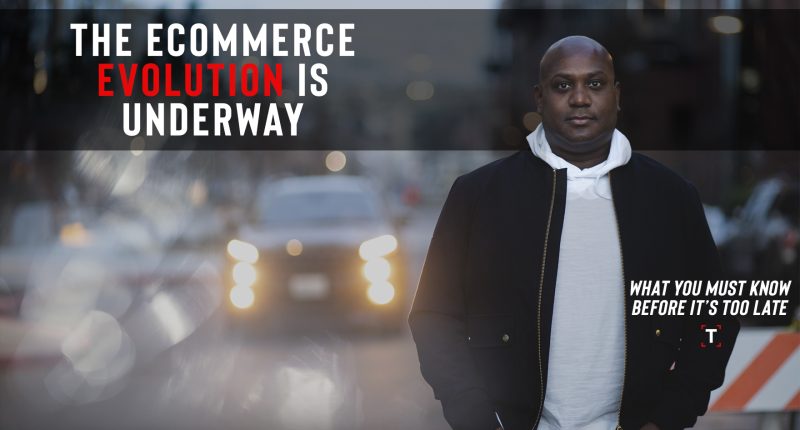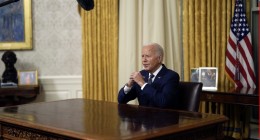The Age of E-Commerce as we know it is over. The flat, one-dimensional grid that has worked for Amazon for the last three decades can no longer be the end all as retail brands particularly lifestyle and luxury brands look to the future of creating an immersive brand experience online for the modern consumer.
I remember sitting on the couch one day and my wife’s phone rang. It was a Facetime call from her best friend, who recently moved to Japan.
As I was sitting there, absentmindedly looking through the myriad of streaming services on the TV, one of my kids was upstairs, alone, playing the Xbox. He was fully immersed and “hanging” out with his friends. Yelling, whooping, and hollering. He was in a totally different world and having a great time.
I looked back, across the room to see my wife struggling to show her friend an item. She was still talking but was trying to copy the URL and text it. All while Facetiming. Just picture what’s going on here as they went through this copy/paste/text loop: They had no way to see what each other was doing or seeing.
What if copying of the URL didn’t work? It often doesn’t.
I remember thinking to myself, how is it that this is the best way to share an experience with our friends? Especially for those who grew up enjoying the weekends at the mall with friends.
I realized that even though the traditional grid e-shopping experience has worked for the last 30+ years, it isn’t effective in integrating a collaborative experience for consumers. Many corporations have taken an “If it isn’t broken, don’t fix it mindset” and most e-commerce sites offer the same, lonely, monotonous shopping ordeal.
SHOPPING IS A TEAM SPORT

Consumers feel isolated and often frustrated in this two-dimensional shopping world. The brand experiences that they have come to enjoy whilst shopping in flagship stores with friends, the sensory moments, immersive brand culture, and the human interaction is completely lost online. In the current model, the brand experience is utterly mottled in the digital presence, but it doesn’t have to be that way.
The last time a brand decided to Turn On What’s Next they became Amazon, and the competition is still trying to catch up even as this framework proves to be ineffective for lifestyle and luxury brands. Another example is Tesla. They turned on what was next and the global automotive industry was turned upside down.
What can we learn from companies like Amazon and Tesla?
They did not accept the industry strategy – they created it.
Innovation is not about doing something new; it is about exploring existing concepts in a new way. When we work with enterprise firms we first listen, study, and then design strategies and implementation details to catapult them into the power position.
While listening to the customer is key, being able to see ahead and anticipate what your customers need before they articulate or even realize it is the sweet spot. If Henry Ford had asked what people wanted, they would have said a faster horse. One of the ways our clients have been able to get ahead of the brand-tarnishing sneaker bot trend was by working with us early to design system processes to deter bots. We did this in 2013 – long before most brands even knew that bots were a problem.
60% of global consumers are more likely to purchase from a brand if it’s more digitally innovative. There are three underlying principles for the new era of online shopping. They are genuine connection, human emotion, and collaboration. The market leaders of the future digital retail space are bringing a new way to experience, explore, collaborate, entertain, and shop. Businesses that lead in this space will be the future leaders and will stand apart from the rest.
The good news is that this can be done in a way that is highly cost-effective while increasing conversions, retention, and overall profits. Sparq Commerce is the key to revolutionizing your brand experience online.
This multisensory experience offers customers the ability to truly explore products without leaving their homes. It gives businesses the opportunity to offer a number of options to consumers that weren’t possible before, such as customizing products or offering personalized service from retailers themselves. In fact, the majority of consumers (80%) are more likely to purchase from a company that offers personalized experiences.
For an increasing number of people, shopping is not only about buying a few items at once. It is about browsing stores, trying on clothes, socializing with friends, and being entertained. Nowadays, we want to feel like we are actually there when we shop. We want to explore. We want to learn. We want to shop with our friends. We want to be Turned On.
In a survey of 1000 people, 64% of adults said they end up spending more money when they shop with friends. This is exactly what the Sparq Commerce method facilitates. Imagine being able to share what you are seeing with your friends, in real-time. Imagine being able to drape the newest Hermès Kelly purse over your shoulder or put that Cartier bracelet on your wrist to see how it looks on you.
SIMPLE ELEGANCE
Caution should be exercised when attempting to deploy advanced technology to existing e-commerce sites. It’s easy to fall into the trap of adding a widget here and a gadget there as bolt-ons. This is often done without much thought to the customer journey, ensuring it is connected and without dead ends. Before long, Frankenstein’s monster is alive.
The worst mistake a brand can make is to invest in games or immersive technologies without a plan to integrate it into the buying journey. This may garner a few thousand clicks but if there is no path to monetize, it’s wasteful.
While we can be inspired by the gaming sector to create a more immersive experience, what we need to focus on for What’s Next in e-commerce is integrating a human experience that does not isolate customers who do not want to end up in a cartoonish experience. With Sparq Commerce, brands can interact with customers on a larger, global scale with fewer associates and brand ambassadors. They can deploy theatrical brand storytelling and speak to the heart of the consumer. And of course, live shopping can be done with ease.
From a marketing standpoint, strategies that leverage immersive technology provide opportunities to engage customers in a more meaningful way. This will help brands reach their target audience on a deeper level and drive revenue. As evidence, furniture retailer CB2 found that 3D and AR experiences drove 21% higher revenue per visit.
Virtual Reality offers additional possibilities for marketers, providing options like an interactive learning environment or virtual showrooms. These experiences are tailored to match customer needs and provide them with information they might not have found elsewhere or on their own.
Much of the above consists of existing technologies and techniques. For example, AR capabilities were built into the iPhone back in 2017. Game players have been linking up and connecting with friends from anywhere in the world in real-time for decades.
Immersive technologies enable brands to meet their customers where they are for a deeper emotional connection. The key difference with Sparq Commerce is an entire reimagining of the e-commerce journey while taking it to the next level of humanizing it. To create experiences that unlock desire. Sparq Commerce brings immersive commerce to brands and allows customers to experience more pleasure while shopping online.
——-

Bio: Dedrick Boyd is an international e-commerce strategist and the founder of TechSparq. For over 23 years, Dedrick has been at the center of e-commerce: From marketplaces, to procurement, to B2B, and finally B2C e-commerce. With his no-wasted-motion philosophy, Dedrick brings a true focus on solutions that elevate the customer experience without getting tech-widget-happy, to increase market influence, market standing, and profit for his Fortune 500 clients.







